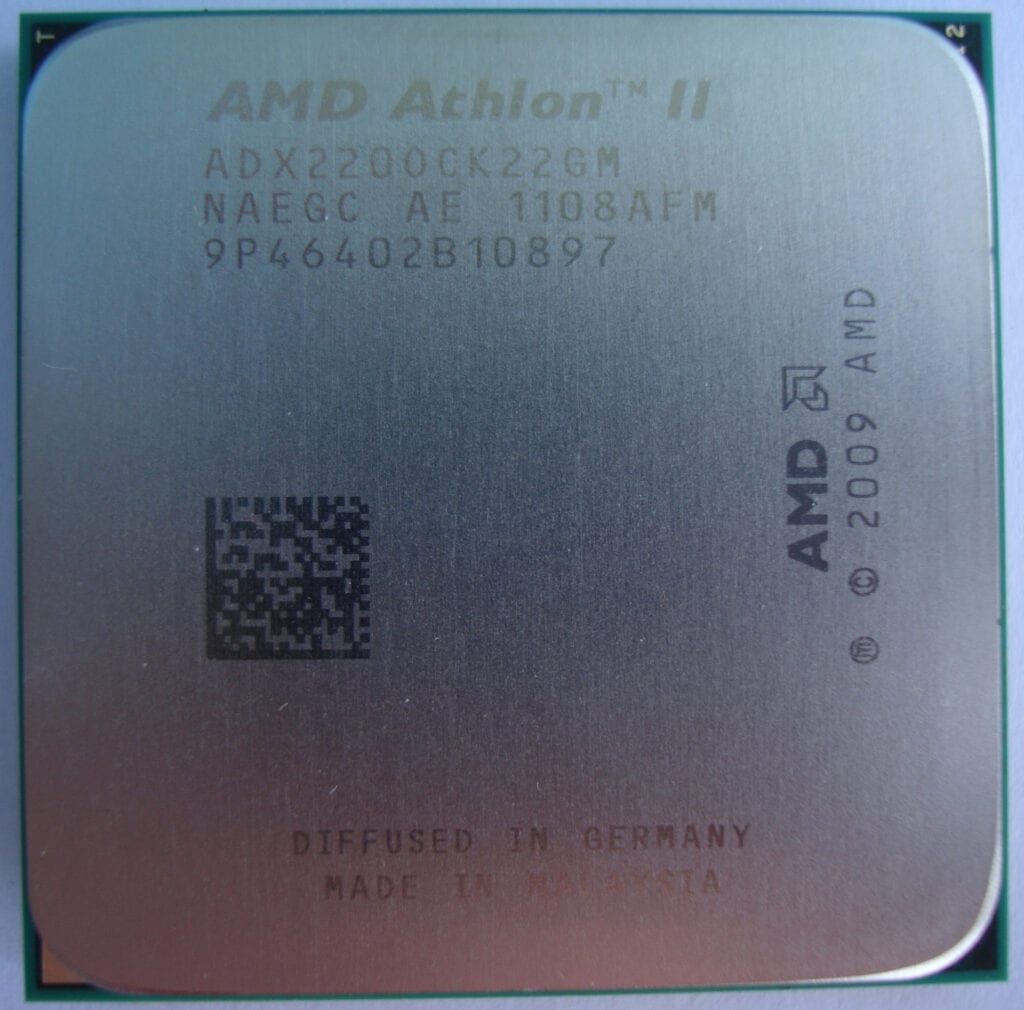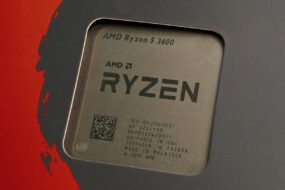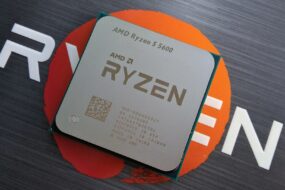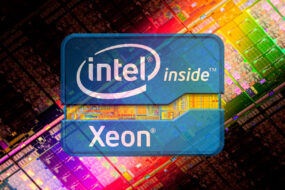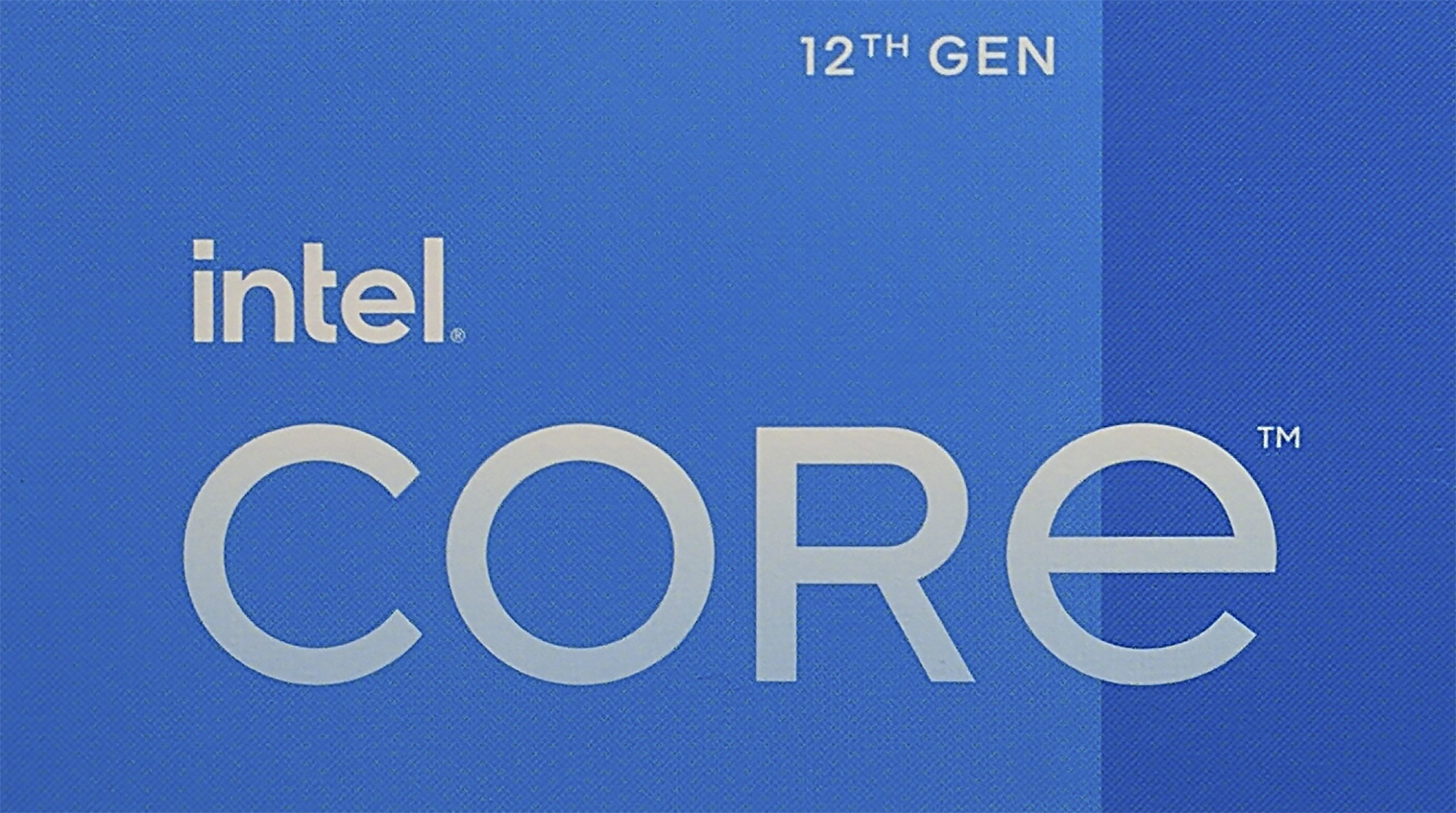
Athlon II X2 220 is a typical Regor core: It is based on the K10.5 microarchitecture and is manufactured according to a 45nm process technology. But there are also some caveats. Chips X2 220 and X2 215 are cut in half by the L2 cache. Unlike their older brothers, which have a whole megabyte of L2 cache per core, the chips described above have only 512KB per core.
The base frequency of the chip is 2800MHz; it is obtained by multiplying the 200 bus by a factor 14. The core voltage is 1.32V, the HyperTransport bus frequency is 2000MHz. The revision of the CPU C3, which tells us about the excellent overclocking potential. Among other things, the processor consumes up to 65 watts of electricity, which is quite a bit by modern standards.
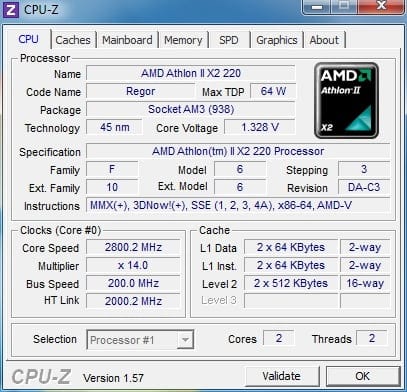
Test setup
- Motherboard AM3 – ASUS M4A785TD-V EVO
- Motherboard LGA1155 – ASUS P8P61 M-LX2
- Processors – Athlon II X2 220 (C3), Celeron G530 (D2)
- CPU Cooling – Cooler Master Hyper TX3
- RAM – 2x2GB DDR3 Corsair XMS3 PC12600 (9-9-9-34)
- Video card – AMD Radeon HD4670 (800/2000MHz) (overclocking)
- Video card- Sapphire Radeon HD5770 Vapor X (960/5300MHz) (tests)
- Power supply – Cooler Master 500W
- HDD — Samsung HD161HJ 160GB0GB
Software:
- Windows 7 x64 SP1
- CPU-Z 1.57
- CineBench 11.5 x64
- 3D Mark 2006 v1.2.0 (CPU test only)
- 3D Mark Vantage v1.1.1 (CPU test only)
- WinRar 4.0
- x264 HD Benchmark 4.0
- FRAPS v3.1.0/build11052
Overclocking
Let’s go directly to overclocking. Since the processor is based on the 45nm Regor core revision C3, I easily managed to achieve stable operation of both cores at a frequency of 3920MHz:
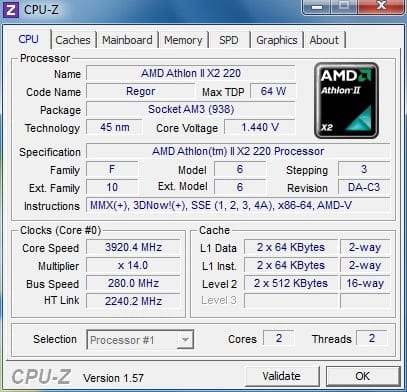
To do this, we just had to raise the core voltage to 1.44V, lower the HT bus multiplier to 8, and still raise the voltage on it by 0.1V. In this case, the RAM frequency was equal to 1680 MHz. The memory controller speed was relatively low 2240 MHz (it is better to bring it up to 2400-2600 MHz). With these settings, the processor was able to pass the 45-minute LinX test.
I consider such testing to be an average indicator of stability. But frankly, we don’t need more. In this state, the processor was able to successfully finish rendering a ten-hour scene in 3Ds Max 2010.
Well, let’s move on to maximum overclocking, for which stability is not important. So, having increased the voltage to 1.5V, I was able to force the processor to load at a frequency of 4060 MHz, there was no stability, as I said above:
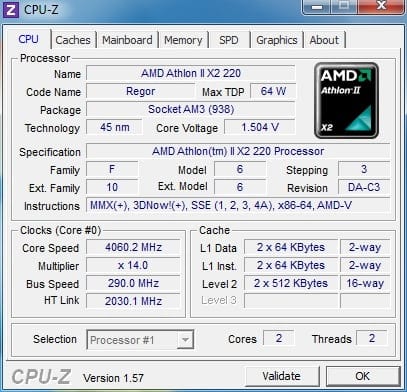
After passing the milestone at 4GHz, the processor began to react rather weakly to an increase in voltage, both to the cores and to the memory controller. But despite this, I was able to bring its frequency to 4144 MHz. This is a pretty good result for the Regor core, especially air-cooled:
Testing:
With overclocking sorted out, now it’s time to go directly to performance testing. In this article, the opponent of Athlon II X2 220 will be the junior dual-core representative of the Sandy Bridge generation, namely Intel Celeron G530.
Applications:
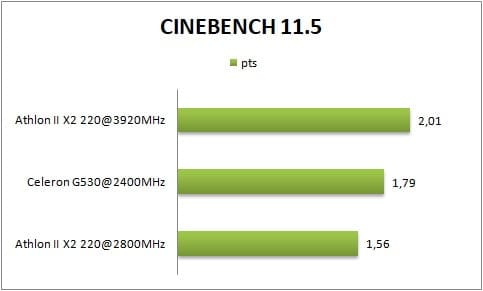
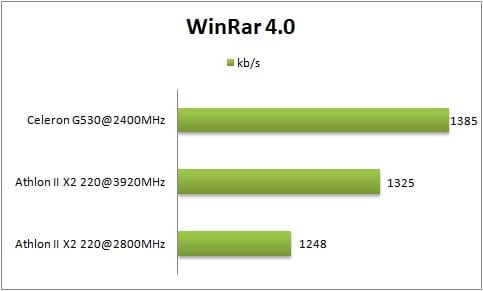
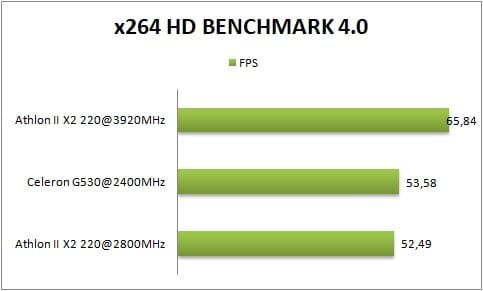
Games, synthetics:
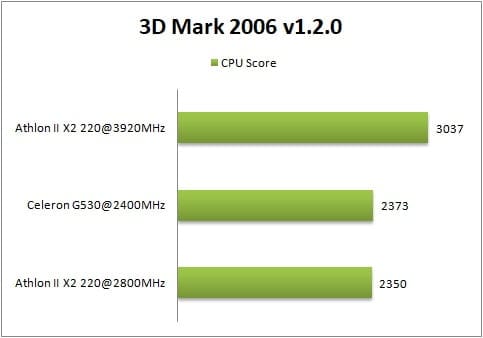
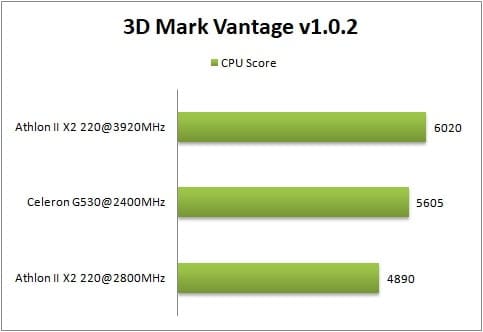
Games:
Graphics quality settings in games:
GTA IV v1.0.0.7:
- Built-in benchmark
- Resolution – 1280×1024
- Textures – high
- Reflection resolution – high
- Water quality – very high
- Shadow quality – high
- Filtration quality – x16
- Viewing distance – 100
- Detail depth – 100
- Traffic flow – 100
- Depth of field of observation – on/on
- Vertical sync – off/off
Prototype:
- Fraps
- Resolution- 1280х1024
- Textures – high
- Shadows – high
- Anti-aliasing – 0х
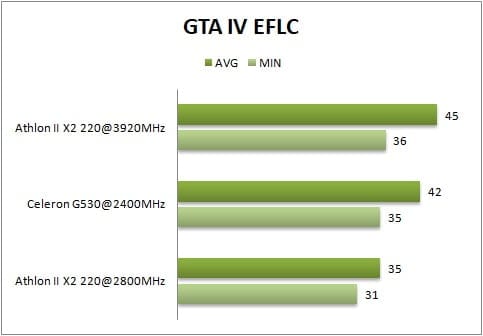

Conclusion
What do we end up with? In the base operating mode, the Athlon II X2 220 processor lost to the more modern Celeron G530. In overclocking, the AMD chip took revenge, but with a greater stretch, especially when looking at the difference in frequencies.
Considering that overclocking Athlon II requires a rather strong motherboard, plus a relatively efficient cooler, we can speak of its failure over the opponent.
It is quite obvious that due to the architectural features the Celeron G530 cannot be overclocked, but it already demonstrates excellent performance per megahertz.
Depending on the store, the cost of these processors differs by plus or minus five dollars. The same can be said for the price of budget motherboards for both platforms.
Should you choose Athlon II X2 220 or Celeron G530? It’s up to you to decide, I’m leaning on the side of the cold and moderately productive Celeron G530 (plus the perspective of the platform – Core i7-2600K in any case will be more interesting than Phenom II X6 1090T).
